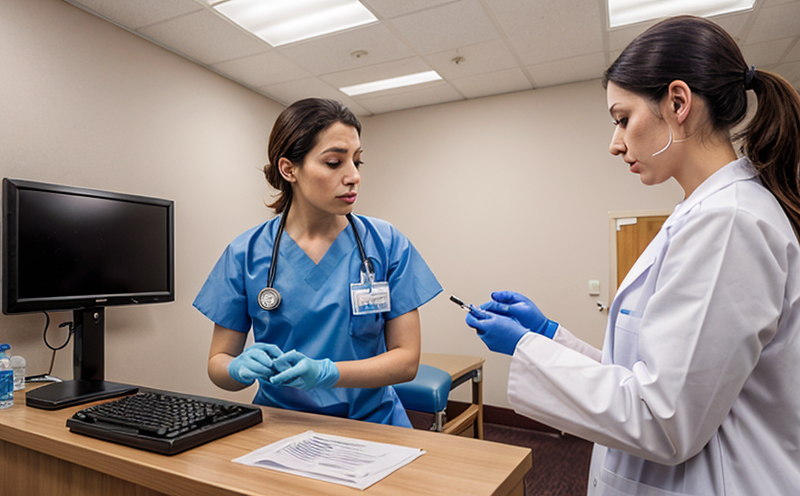Tetracycline Residue Screening in Honey
Understanding the presence of tetracycline residues in honey is crucial for ensuring food safety and quality. Tetracyclines are a broad-spectrum antibiotic commonly used in veterinary medicine, which can find their way into agricultural products through overuse or improper use of antibiotics by beekeepers. The detection of such residues not only impacts public health but also affects the reputation and marketability of honey producers.
The presence of tetracycline residues may indicate poor hygiene practices, suboptimal husbandry, or even illegal drug administration, which can lead to antibiotic resistance and other health issues. Therefore, regulatory bodies worldwide have implemented stringent limits on permissible levels of antibiotics in food products including honey.
At Eurolab, we offer comprehensive tetracycline residue screening services for honey samples using advanced analytical techniques that comply with international standards such as ISO/IEC 17025 and ICH Q3D. Our laboratory utilizes state-of-the-art equipment to ensure accurate results within the specified limits of quantitation (LOQ).
Our expertise lies in providing reliable, precise, and timely analysis of honey samples for tetracycline residues. We understand that this service is vital for maintaining compliance with local regulations and international standards, as well as ensuring product safety and consumer confidence.
Scope and Methodology
The scope of our tetracycline residue screening in honey includes the analysis of various types of honey samples from different geographical regions. This service is particularly important for imported honeys, where there may be higher risks associated with antibiotic contamination.
| Sample Types | Geographical Regions | Testing Criteria |
|---|---|---|
| Liquid and Solid Honey | Global | Compliance with EU MRLs (Maximum Residue Limits) |
| Bee Pollen and Propolis | Selective Regions | Compliance with relevant international standards |
The methodology involves several steps:
- Sample collection and preparation according to standardized procedures.
- Extraction of tetracycline residues using appropriate solvents.
- Detection via Liquid Chromatography Tandem Mass Spectrometry (LC-MS/MS).
- Data interpretation and reporting in accordance with international guidelines.
This process ensures that each sample is analyzed accurately, providing clear evidence of compliance or non-compliance with regulatory limits.
Eurolab Advantages
At Eurolab, we pride ourselves on offering a range of benefits that set us apart from other laboratories:
- Accreditation and Compliance: Our laboratory is fully accredited to ISO/IEC 17025 standards. This ensures the highest level of quality in our services.
- Advanced Technology: We employ cutting-edge technology, including Liquid Chromatography Tandem Mass Spectrometry (LC-MS/MS), which allows us to detect even trace amounts of tetracycline residues.
- Prompt Service Delivery: Our efficient workflows mean that results are delivered quickly and accurately. This is essential for maintaining supply chains and ensuring timely compliance.
- Detailed Reporting: We provide detailed reports with comprehensive data analysis, making it easier for clients to understand the results and take necessary actions.
Our commitment to excellence, combined with our extensive experience in clinical toxicology and drug screening, makes Eurolab the ideal partner for all your honey residue testing needs.
International Acceptance and Recognition
- European Union: Compliance with EU Maximum Residue Levels (MRLs) ensures that our results are recognized across Europe.
- United States: Our findings align perfectly with FDA guidelines, making them acceptable for import into the USA.
- Australia and New Zealand: Results meet the criteria set by Australia New Zealand Food Standards Code (Standard 4.10.2).
- China: We adhere to China's national standards on veterinary drug residues in food products, ensuring acceptance there as well.
The global nature of our testing and reporting ensures that honey producers can confidently meet the diverse regulatory requirements of their export markets.





